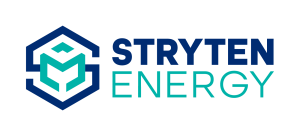The impacts of energy use and renewables on the battery market
As we approach the halfway mark of 2023, the leading energy news carries a familiar refrain – rising pressure on the grid, combined with a desire to move toward renewable energy sources, is leading to a greater push for clean energy investments. Below are three key energy trends to keep an eye on throughout the summer and beyond:
A rise in energy demand
The first key energy trend is increased energy demand. With summer months comes greater pressure on the electric grid, and we’re already seeing signs that 2023 could take demand to new highs. While it doesn’t expect the same grid stability issues it faced during 2021’s winter storms, ERCOT – one of the agencies that maintains Texas’ power grid – has already issued a warning that its excess energy supply might not be enough to meet demand. And California will soon brace for wildfire season, starting later this summer. Last summer’s heat waves caused the state to ask residents to conserve energy during peak usage hours.
Americans consumed about 4 trillion kWh in 2022, up almost 3 percent from 2021. As many as 26.4 million electric vehicles are projected to be on U.S. roads in 2030. The Energy Information Administration (EIA) anticipates industrial energy use could grow by more than a third between now and 2050, based on economic trends. As the U.S. becomes more electrified, it is vital to strengthen the resiliency of our power grid.
A rise in renewable energy capture demand
Increasing uncertainty around aging grids has put the spotlight on renewable resources to meet energy demand in the long term is another key energy trend. The EIA estimates 54% of new energy generation capacity built in 2023 will support solar power. As the U.S. invests more in renewable energy capture, we’ll gain the resources to protect the grid from power shortages.
In the meantime, some communities are adopting microgrids to address these shortages. Although microgrids can run on traditional energy sources, they can also function using renewable energy combined with a battery, making them a great option for clean backup power. Because a microgrid can be placed closer to critical infrastructure, it’s a good option for keeping hospitals and emergency shelters online during a crisis.
A rise in renewable energy storage demand
Storage of renewable energy is the third key energy trend. Renewable energy is the answer for both expanding microgrids and ensuring the long-term resilience of the U.S. grid. But because of the intermittent nature of solar and wind energy, we also need to invest in energy storage systems to ensure stable energy access 24/7. Energy storage deployment could increase as much as five-fold through 2050, totaling 680 gigawatts depending on cost and other factors.
Advanced lead battery energy storage systems (BESS) are already online to store excess renewable energy – and they are themselves renewable. In the United States, lead batteries have a recycling rate of nearly 100%, and there’s a well-established supply chain for recycling lead batteries, cleaning and separating their components, and manufacturing new batteries from recycled components.
However, lead BESS alone won’t be enough to store the vast quantities of renewable energy that is generated. A variety of battery chemistries will be needed, based on the duration of the application. Vanadium redox flow batteries (VRFB) are the most promising long-duration energy storage option. With a stable lifespan of 20-30 years, easy recyclability, and an emerging domestic supply chain similar to lead, VRFBs promise to offer the long-term solutions the U.S. needs to store massive amounts of renewable energy generation to ensure energy resiliency and independence in the United States.







